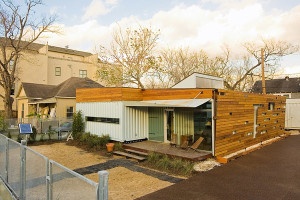We have much more to do and your continued support is needed now more than ever.
Greenforce Initiative Grant Effort – Shipping Containers as Housing

Shipping containers as Housing
Earlier this month, I gave a lecture at the Krasl Art Center (Krasl) in St. Joseph on the rehabilitation of shipping containers, primarily for housing purposes. This event was part of the Creativity and Sustainability Lecture Series provided on a monthly basis by the Krasl. Locally based Lake Michigan College is currently undertaking an initiative to determine a sustainable use for shipping container in the community, an initiative funded by a Greenforce Initiative Mini Grant.

ISO standards limit the number of shipping cycles for which these containers may be used and recycling them is exceedingly cost prohibitive – melting one down requires 8,000 kilowatt hours of energy. There are approximately 1,000,000 surplus containers worldwide at any given time and since the United States imports more material than we export, we have a surplus of shipping containers that are no longer eligible for use in shipping cycles. Shipping containers have been creatively employed through a variety of ways to assist in providing creative housing solutions across the globe. Shipping containers provide structure and a strong roof, though to make them























